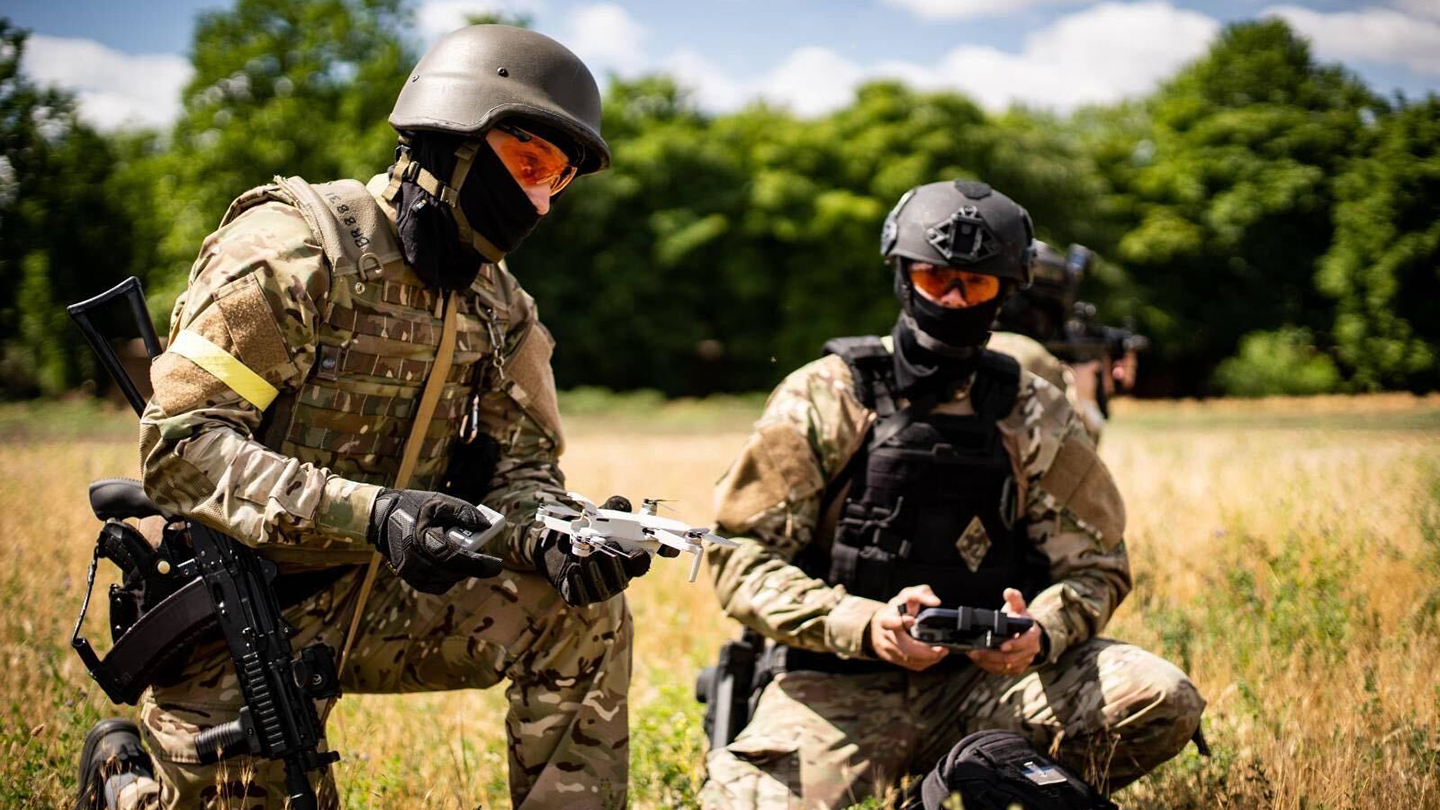Standing near the Dnipro River, close to the city of Kherson, Monya heard the Russians open fire from the other side of the waterway, something they had been doing with a great deal of frequency using multiple launch rocket systems (MLRS), tubed artillery and mortars.
Shells were landing just 300 to 400 meters away from his position.
“It sounded like a whistling first because it was 120 mm shells,” said Monya. “Then we felt a very powerful explosion.”
Despite the barrage of incoming rounds, Monya said he and the drone pilot under his command did not try to seek shelter. With their unit had been under fire for days after moving into a new area of responsibility, it was up to them to try to use their DJI Mavic 3 drone to find the Russian mortar batteries so that Ukrainian forces could return fire and silence the threat.
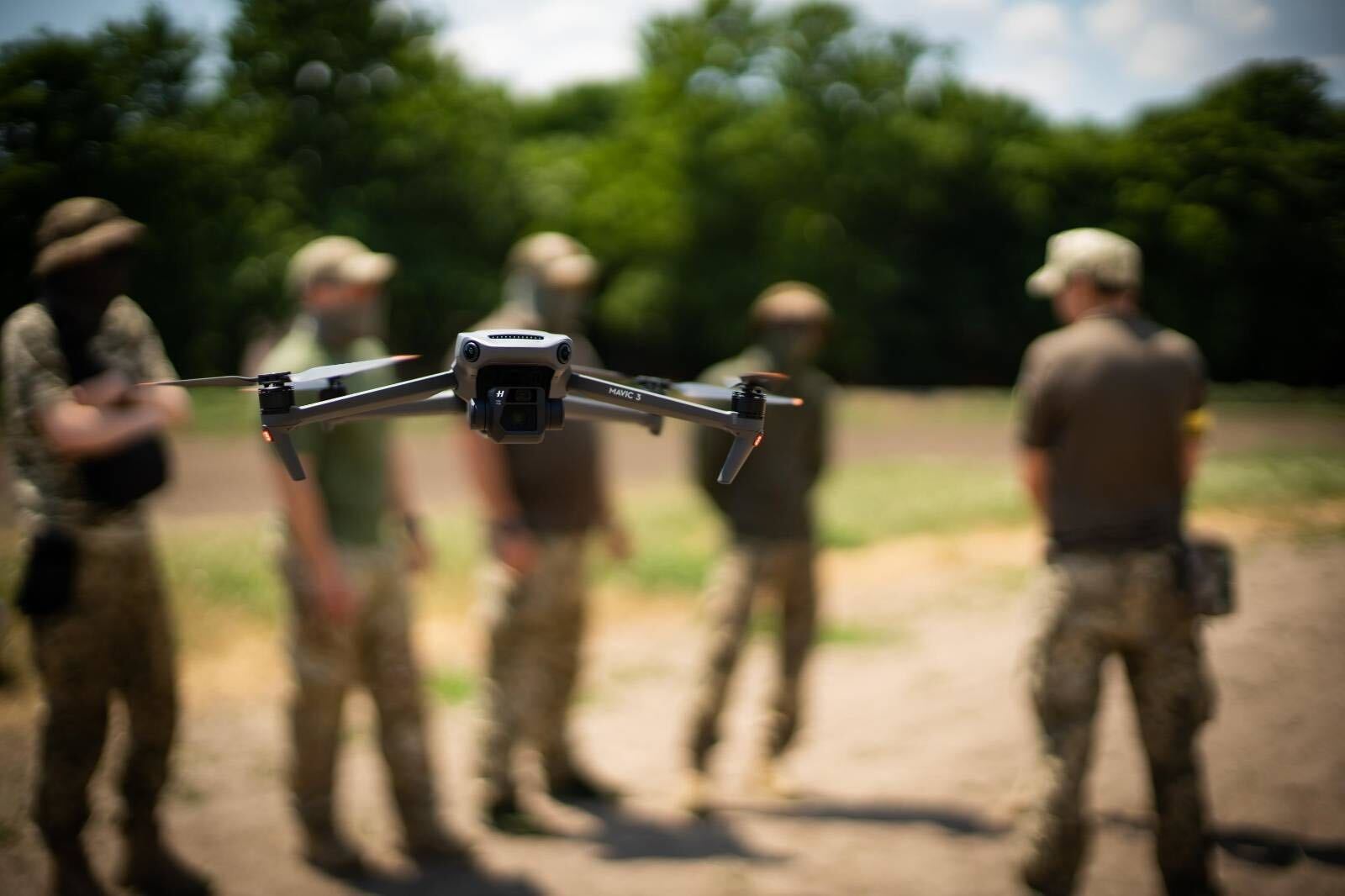
“We were standing on a position on the left flank of our unit and were just choosing a convenient position for work,” said Monya, a 40-year-old lieutenant and senior drone pilot in the Ukrainian Territorial Battalion who supervises seven two-person teams of drone operators. He spoke to The War Zone about his work and training on the condition that we only use his call sign.
“When we heard the fire of enemy artillery, we did not try to hide, because we were afraid of losing the connection between the radio control unit and the drone,” he said. “When they opened fire, we heard the sound and tried to see the smoke from the shot.”
Monya said his main job is to plan and control the operations of his team of pilots. They are among thousands of Ukrainian troops who volunteered to learn how to operate commercial off the shelf drones and provide critical intelligence, surveillance, reconnaissance, fires adjustment and strike capabilities.
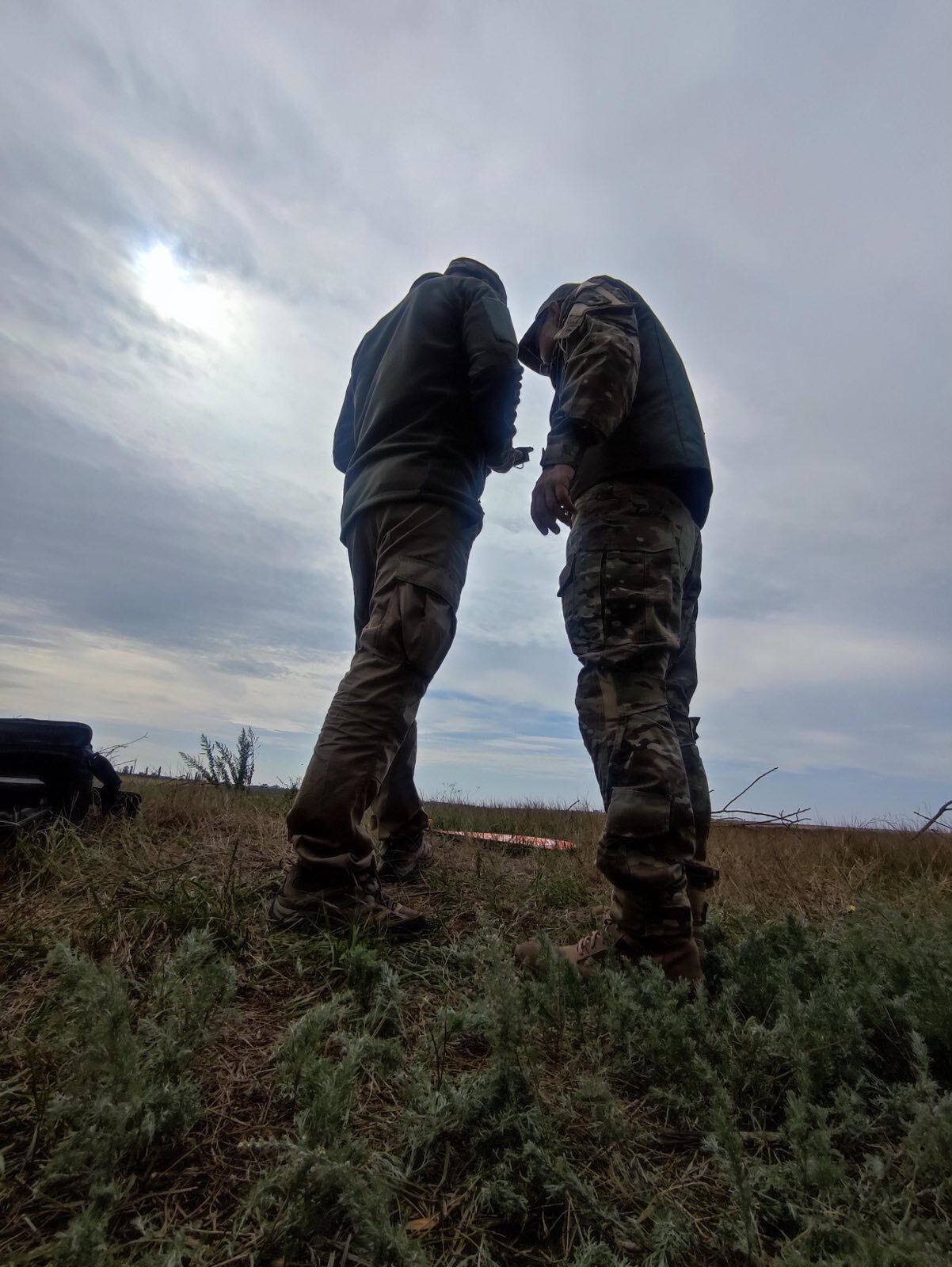
But before sending any teams into the field, Monya often personally scouts out the positions so that he knows the challenges those drone operators will face.
“If I am not sure that I have done my best to complete the task safely, I take the drone myself and [fly] it,” he said.
“Two months ago, when we occupied a new area of responsibility, our soldiers were being fired on continuously with 120 mm shells and no one could figure out where,” he recalled. So he took one of the most trained pilots and the two of them, under continuous fire, tried to track down enemy firing points.
It was a risky operation, said Monya.
“We did not have a safe take-off point and cover,” he said. “We disguised ourselves as best we could and hoped for good luck.”
Becoming a combat drone operator
It takes a lot more than luck to operate drones, especially under fire.
On Feb. 23, 2022, Monya was an attorney specializing in tax law. He was living in Odesa with his wife and 12-year-old daughter. Everything changed the next day, when Russia launched its all-out invasion.
Monya volunteered to join the Ukrainian Territorial Defense Battalion on March 23 and by that summer, he became an officer in the unit’s intelligence group. Soon after, an order came down from the high command to send five candidates to a new training program called Free Air that would qualify them to be combat drone operators.
As one domain in which it could carve out an advantage, drone warfare became a key element of Kyiv’s tactical playbook. Qualified pilots were needed and fast.
Understanding the need for people to fly the drones that would locate Russian fires, adjust Ukrainian fires and strike targets when needed, Monya asked to be one of those five candidates. He already had a small bit of experience with drones and a personal interest in drone warfare.
Before the war, a client had a sea-going drone boat that he had the chance to operate. It gave him a small taste of how to guide a boat remotely in open water and the many possibilities something like that engenders.
“It was great experience,” he said.
For Monya, the use of drones in warfare was a personal passion even before the full Russian onslaught of his homeland.
“Before that, I constantly studied new ways of conducting modern reconnaissance and warfare,” said Monya. “I was certainly impressed by the success of the Azerbaijani army, which was largely successful thanks to the skillful use of drones, so I decided to include myself in the list in order to improve my skills.”
Free Air school
Free Air school was created in April 2022, as the demand for Ukrainian drone operators surged, said Michelle Armand, the school’s director.
Armand is a former TV journalist in Ukraine who operated drones as part of her job. Now she is in charge of ensuring that thousands of Ukrainians learn how to operate a drone well enough to use it in battle.
As of December, Free Air had trained some 5,000 Ukrainian troops, special services personnel, rescuers and law enforcement officers to become drone pilots. Armand said.
The school, which offers what is now an intensive five-day training program, caters to those with a wide range of experience, but largely people who have never operated a drone before.
“We teach UAV operators from scratch,” Armand told The War Zone. “People who have no prior experience using UAVs come to us. We teach what is necessary for our pilots to carry out combat missions.”
The scope of this knowledge and skill set “is extensive and goes beyond standard protocols,” said Armand. “The success of the mission depends solely on the proficiency of the pilots and the capabilities of the drones themselves.”
The training program, she said, “includes flight safety, control skills, working with [intelligence, surveillance, target acquisition and reconnaissance] ISTAR systems, and if necessary, dropping ammunition (we use dummies).”
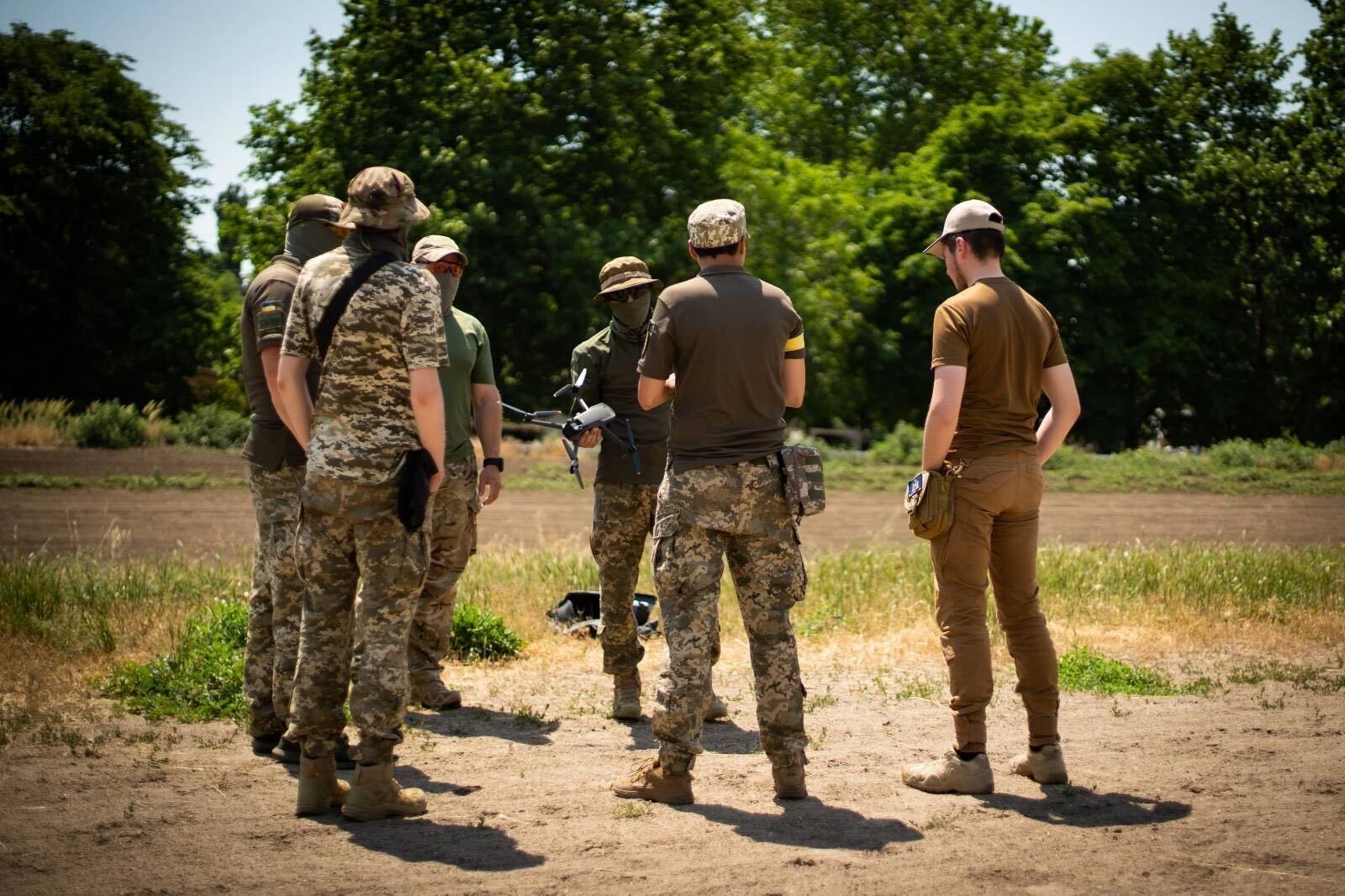
Free Air devotes “a lot of time to the safety of the pilots” and trains them to work in adverse weather conditions, like cold temperatures and strong wind, Armand said last month during a press conference at the Ukrainian Media Center. “Because on the front line, you need to be able to hold the drone when there is bad weather, when it loses contact, when the electronic warfare units are working.”

The program also teaches students to work with Ukraine’s DELTA situational awareness system – an intelligence collection and management system created by Ukraine with the help of its allies to help the military track the movements of Russian forces – “and other systems I cannot discuss,” Armand told The War Zone.
“Of course, we could not exist without the consent and permission of the command of the Armed Forces of Ukraine,” she said. The school, she added, cooperates with the National Police, State Emergency Service, Border Guards, Navy of Ukraine, and other military structures. “We not only train pilots, but also develop proprietary programs that greatly simplify the work of military personnel on the front line,” she said.
One thing Free Air does not teach is how to fly the so-called First Person Video (FPV) drones – single-use quadcopter controlled through VR-goggles that can strike the front line of enemy forces.
“There are schools that teach on the FPV,” she said. “We can also teach how to fly FPV drones. But there is no need for that. We focus on what our military needs most at the moment.”
Mostly, Free Air uses DJI Matrix models 200, 300, and 30, Armand said. With or without thermal imagers.
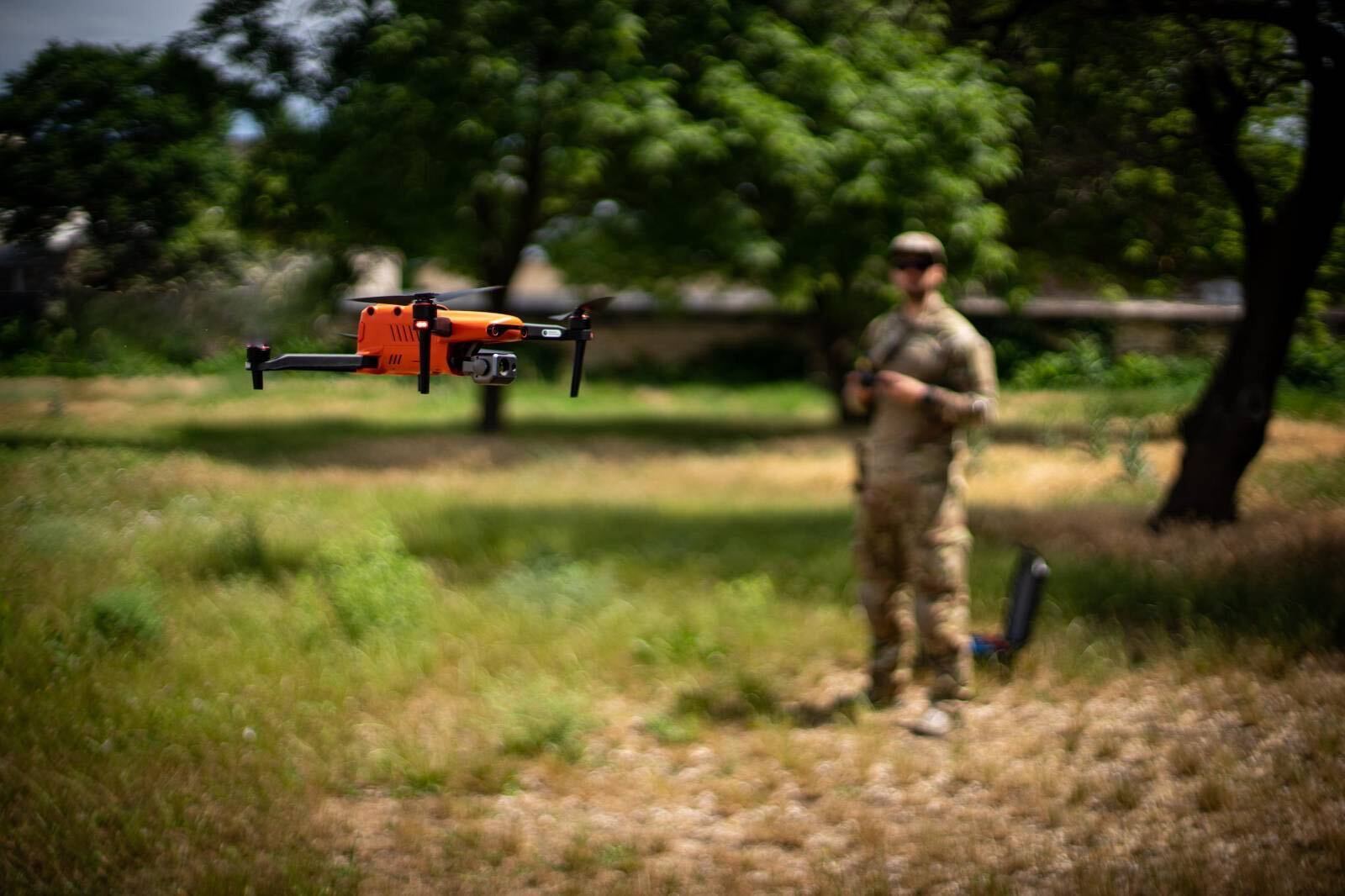
The drones used by the school are provided by co-founders and volunteers, she said.
“They get damaged, broken, and lost just like on the front line. We are a non-profit organization and currently do not have the means to purchase new drones ourselves. Asking volunteers to provide a few drones is inappropriate because the priority is drones on the front line.”

After training, graduates either return to their units and prepare for deployment to the front line, or go straight to the battlefield.
But as a result of the training, Armand said that no Free Air drone pilots have been killed in action.
“Our main achievement as a school is that we educate a large number of people,” she said. “We have been doing this since April, and all of our trainees are alive and well. They successfully complete tasks on the front line, and this is our pride.”
Quick study
When Monya took the Free Air course, it was a three-day program, consisting of two parts – theory and practice.
“But it was very difficult to study all the information because, at the time, you had to pass in three days.”
Monya said he worked with a wide array of drones while at Free Air.
“During the training, we learned to control all the drones available to our unit,” he said. “These were mainly DJI and AUTEL drones, but we also learned how to use rarer models, such as Yuneec H520E hexacopters.”
Monya said the instructors did a great job.
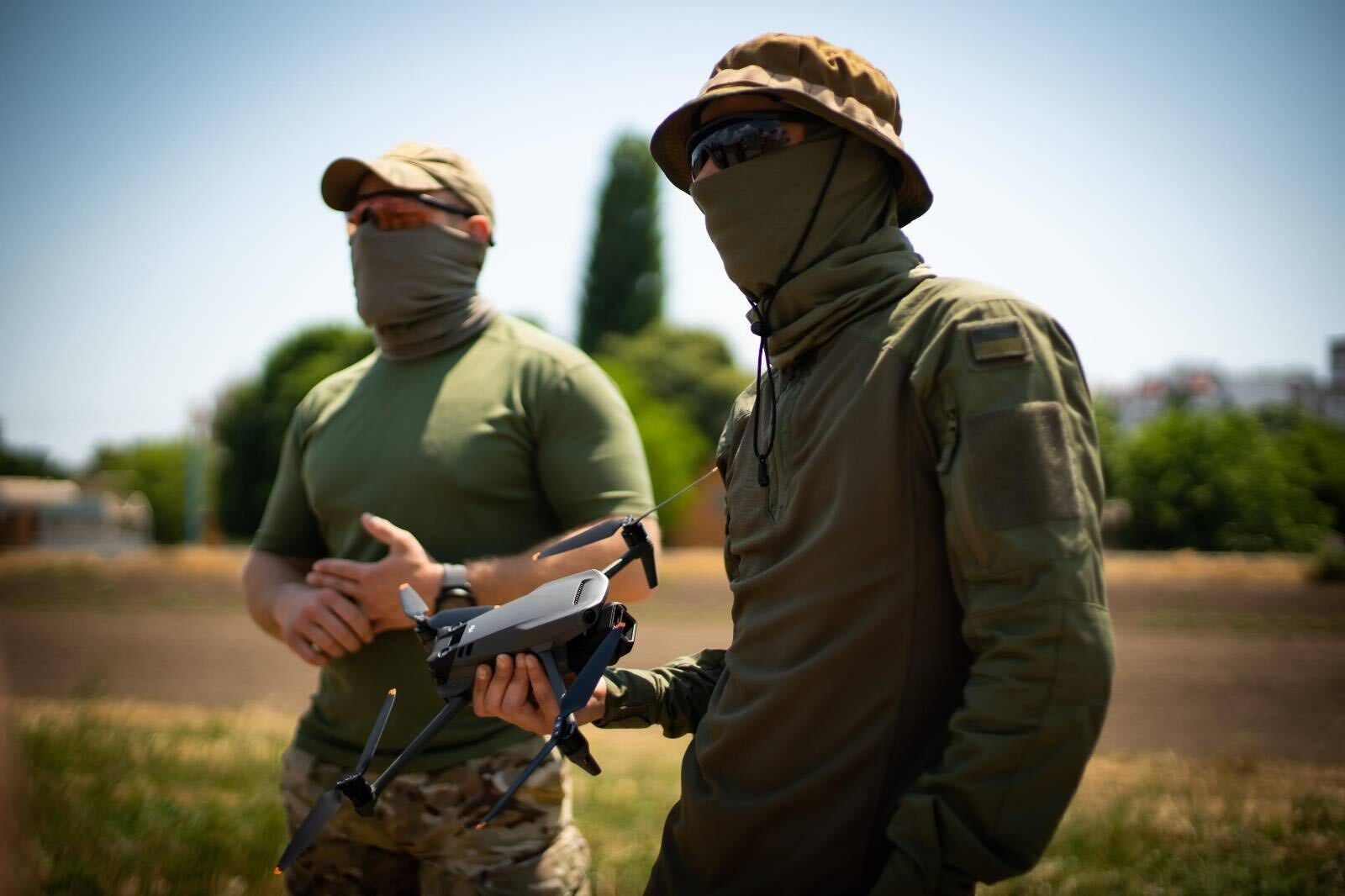
“It’s hard to believe now, but thanks to the efforts and professionalism of our instructors, we quickly gained the skills to safely use drones in combat conditions, studied the methods and tactics of using them for reconnaissance and determining targets for artillery,” he said. “We studied the methods available at that time for adjusting artillery fire.”
The biggest challenge, he said, “was to understand how to operate drones in hard electronic warfare conditions, when you lost all satellites and your drones flying in ‘attitude’ mode, when no automatic stabilization system works.”
Armand, the Free Air school’s director, told The War Zone that both sides employ jamming technology to interfere with adversary drone operations.
After completing the first stage of training in July 2022, Monya said he returned to the school in August and completed an advanced training course. His entire team was certified by Free Air as well.
Free Air claims a tremendous success rate, according to Armand, telling The War Zone that “99% of trainees receive certificates. However, there is a percentage of people who want to try working with drones and later realize it is not for them.”
Building a drone force
It’s one thing to learn how to fly a drone. But that won’t do much good if there are none to operate.
To that end, the Ukrainian government has been working to simplify the process by which the military acquires drones.
“The government has approved a fast-track for drones,” Vice Prime Minister and Minister of Digital Transformation of Ukraine Mykhailo Fedorov wrote last month on his Facebook page.
“It is difficult to have an advantage over the Russian Federation in the number of manpower and weapons. Russia uses its soldiers as meat. The life of every defender and defender is important to us. Therefore, the only way is to create a technological advantage over the enemy. But technology will only be crucial if it is delivered quickly.”
A few weeks earlier, Federov’s team surveyed Ukrainian UAV manufacturers and suppliers on the major roadblocks that are getting in the way of being able to design and produce drones. Ukraine also “adopted the first resolution to accelerate and simplify the import of military-use and double-use goods into Ukraine. In particular, UAVs and components.”
Technology, he wrote, “will only matter if it is used correctly and effectively. Therefore, we actively support the implementation of the DELTA system, the creation of 60 UAV ‘punch mouths’ [specialized companies] and a new application doctrine. All these measures are parts of a single comprehensive plan – to make our army the most technological and victorious.”
Those “punch mouth” units were created in January at the behest of the Command-in-Chief of the Ukrainian Armed Forces, Gen. Valery Zaluzhny.
“The most professional military personnel who will lead the shock companies have already been selected,” according to the Ukrainian Armed Forces General Staff Facebook page. “Each of them will receive drones and ammunition, Starlink and other necessary equipment to defeat the enemy in hot spots.”
Armand said that Free Air is working with the Boryviter Military School to train those troops.
“Together with the Ministry of Defense of Ukraine, the General Staff of the Armed Forces of Ukraine and the State Special Union, within the framework of the Drone Army project, the Ministry of Digital Affairs has created a Coordination Headquarters with key ministries and services for the full implementation of the project,” according to the Ukrainian Armed Forces General Staff Facebook page. “It is necessary to implement a number of key reforms and scale up the production…to provide them with the Defense Forces of Ukraine.”
Ukraine has done a fair bit of technological innovation already. Kyiv’s forces have made use of adapted, commercially available drones, including one that looks to be available on the Chinese marketplace website Alibaba. These drones have been used repeatedly by Ukraine. Some notable incidents involved a twin-boom drone matching this design that was seen crashing into a Russian oil refinery in the Rostov region, near the border with Ukraine, in June. And a similar-looking drone was also seen making an attack on Russia’s Black Sea Fleet headquarters in Sevastopol, Crimea.
They’ve also used the Tu-141, a converted Soviet-era jet surveillance drone, to conduct long-distance strikes and attempted strikes on airfields deep inside of Russia.
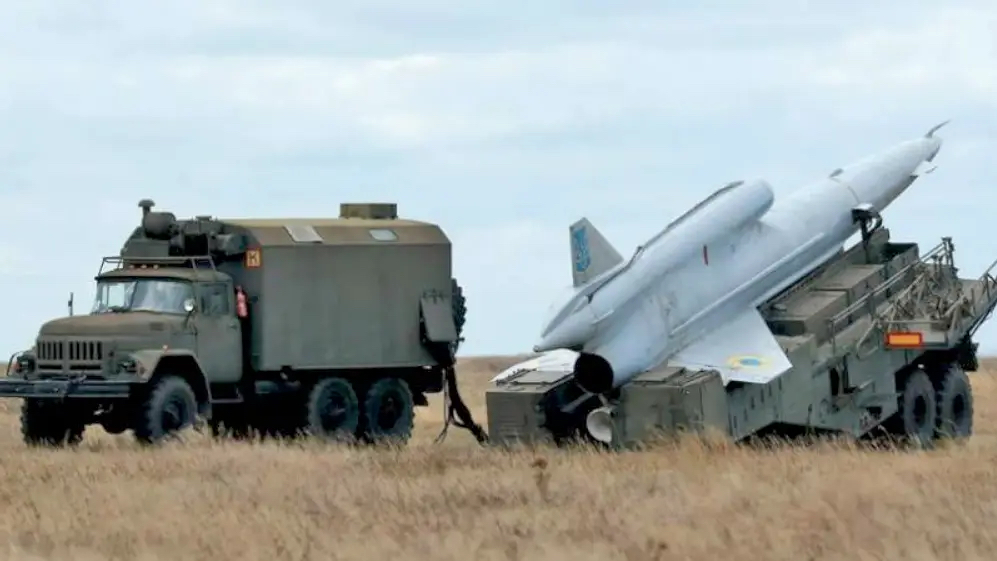
There have also been several crowd-sourced initiatives to procure aerial drones for Ukrainian troops.

Even the likes of Mark Hamill himself have worked to raise money to purchase drones for Ukraine, in his case 10 RQ-35 Heidrun scout drones via the official Ukrainian U24 fundraising platform.
And Ukraine has also been making strides in unmanned surface vehicles (USVs), as well, and has used them in an unprecedented attack on the Russian Navy’s base in Sevastopol last October. And, as with aerial drones, there have been crowdsourced efforts to raise money to purchase more USVs.
Ukraine achieved such great success early in the war with the Turkish-made Bayraktar TB-2 drones that there was a song dedicated to the remotely piloted warplane.

Despite those early successes, use of the TB2 appears to have drastically diminished as a result of the changing face of the air defense threat.
Meanwhile, the U.S. has provided many types of drones, including the AEVEX Aerospace Phoenix Ghost, AeroVironment Switchblade 600s and Jump 20s, CyberLux K8s, and Area-I ALTIUS-600s, RQ-20 Puma and Scan Eagle types, among many others.

The U.K. has rapidly developed and flight-tested a number of “complex” drones that would be suitable for use by Ukraine in its conflict with Russia as well. You can read more about that here.
Armand wouldn’t say whether any of those drones are used by graduates of the Free Air program.
“We don’t really publicize what kind of equipment we use on the battlefield,” she said.
Adjusting fires
Twitter is full of images of Ukrainian drone pilots dropping munitions on Russian vehicles and troops.
Monya said that while his teams do some of that, they have other priorities.
“Of course we do the same, but dropping munitions on Russians is not our main goal,” he said. “It looks cool, but it is used only for minor purposes. The main task is to reveal the positions and plans of the enemy for defense, as well as the search for priority targets for artillery.”
Kinetic operations to drop munitions, he added, “are not more dangerous than usual missions. The difference is only a difficulty of operating drone, when it has more flight weight.”
His teams also use FPV drones on one-way kinetic attacks as well. But they have limitations, he said.
FPV drones “usually don’t have good systems of stabilization and it’s difficult to operate it,” he said. “Also most of them don’t have the option to stream videos, and this is not good for reconnaissance and artillery adjustment. On the other hand they have a very high speed and low costs, so to use them to bombard the enemy is perfect.”

Monya said his team uses FPV drones to attack military vehicles “and sometimes warehouses.”
“They can be very effective in professional pilot hands, because average cost of is about $250-$400, but damage will cost thousands of dollars for the enemy,” he said.
Mission accomplished
Given the poor conditions and incoming Russian fire, Monya didn’t have a lot of time at the scene to observe the results of his surveillance efforts near the Dnipro River. At first, when he looked at the video from the drone on the screen of his laptop, he thought the mission to find the enemy mortars was a failure.
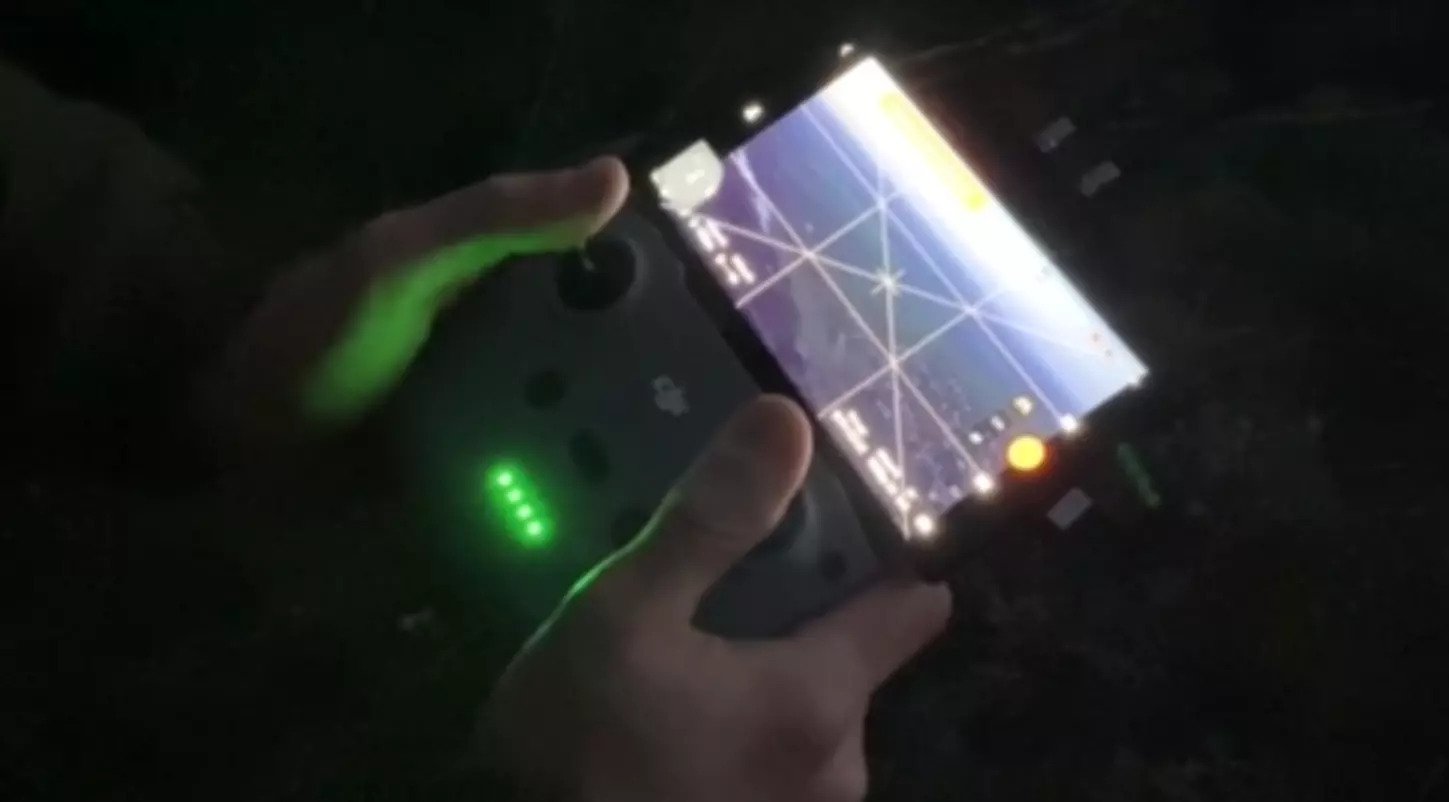
And that sparked some momentary nervousness.
“When I am planning or participating in an operation, I am never nervous, I know that I have all the necessary skills and means to complete the task,” he said. “Usually, nervous tension occurs after, if it was not possible to achieve the set goals in full.”
But any tension eased when he and his pilot returned to base.
“In the small screen of the tablet, we immediately failed to see the exits of the shells,” he said. “However, after returning to the base, luck smiled at us and we saw on the big screen the points from where our unit was being fired upon. Then we determined the coordinates and transferred the target to the artillery.”
The next day “there was a retaliatory strike and such a powerful one that the enemy artillery fell silent for three days,” he said. “Of course, success was largely due to skillful adjustment by our pilots.”
Asked about the greatest success he has achieved with drones on the battlefield, Monya demurs.
“Our team has lots of work every day, so I can’t tell you exactly what is our greatest victory,” he said. “Personally for me, the greatest victory is that all our pilots work with courage and enthusiasm! I think our greatest victory waiting for us is in the future.”
Contact the author: howard@thewarzone.com
